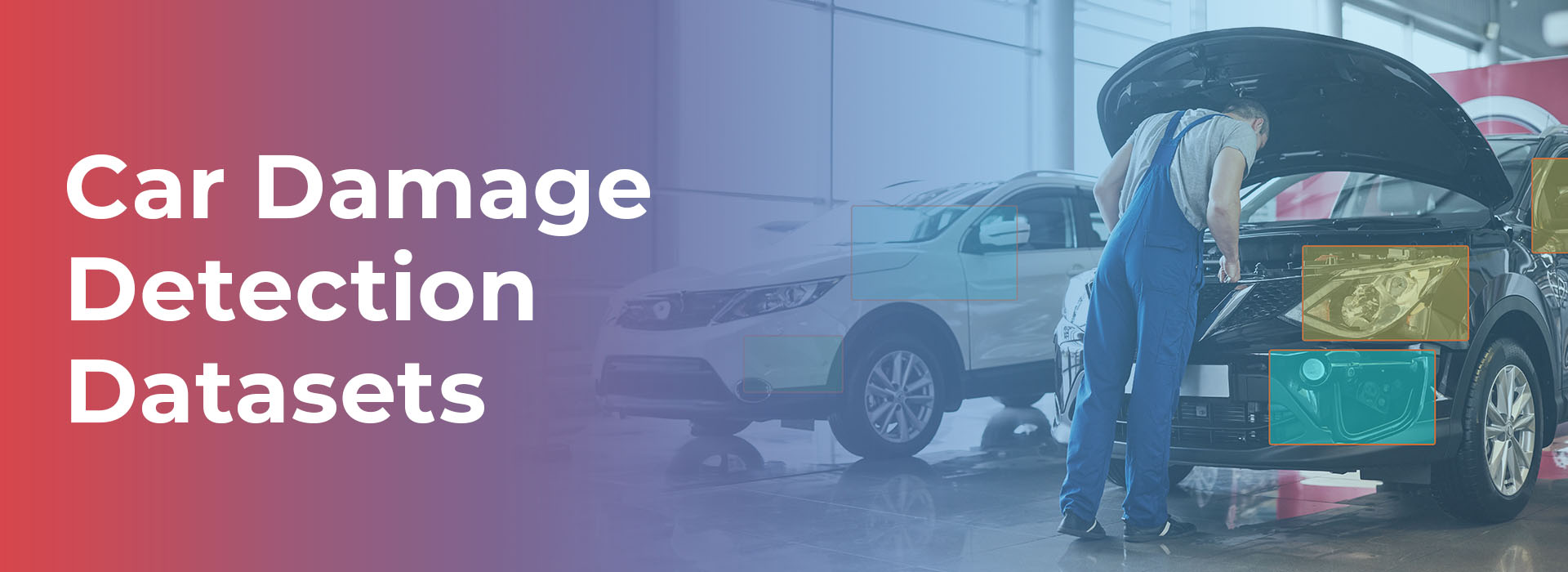Training AI Models With Car Damage Detection Datasets
The process of examining a vehicle for any damages either internal or external is known as ‘Car Damage Detection’. A car damage detection system comprises AI and ML algorithms combined with computer vision and pattern recognition systems. Such systems are highly competent in detecting any type of physical damage on the surface of the vehicle. For efficient detection and working of these systems, they are trained extensively with the help of car damage detection datasets.
These systems also use a variety of sensors and cameras to capture the damaged parts of a vehicle. Furthermore, some advanced systems not only assess the severity of the damage but also provide an estimate of the cost required to fix it. If you are looking to source quality data for training your vehicle damage detection models then, look no further than Macgence. They provide the best car damage detection datasets in the market which’ll help you to elevate your damage detection models. For more information, log on to www.macgence.com today!
A general procedure followed by a car damage detection system comprises three key steps:
- Capturing of images
- Recognizing the vehicle and elements
- Detection of damages
Algorithms Used for Car Damage Detection
The primary algorithm used in a car damage detection system is an image segmentation algorithm. Specifically, based on certain visual characteristics like color, texture, shape, and more, such algorithms attribute a particular class to a pixel. In the specific case of a vehicle, it classifies them as ‘with damage’ or ‘without damage’. With the help of image segmentation, a system can simplify the image representation into a more specific and meaningful form by separating objects from the background. This also makes it easier for the system to analyze the detected objects. We can categorize image segmentation into two further categories: ‘Instance Segmentation’ and ‘Semantic Segmentation’. Let us look at each of these approaches individually.
- Instance Segmentation
Using instance segmentation, we identify and label individual objects with unique identifiers. Object detection is the first step of instance segmentation. Using a computer vision algorithm, the system detects all the objects in an image by employing bounding boxes and several other techniques. An algorithm calculates the probability that an object in the bounding box with a specific class, e.g., car, tree, human, is inside the bounding box when it detects and classifies car damage.
The next step of instance segmentation involves individual segmentation in each of the bounding boxes. Further, each pixel is labeled to indicate whether it belongs to a particular object or not.
The process of instance segmentation also uses pixel-wise masks. Pixel-wise masks are binary images that assist in identifying the exact location of objects in an image. Pixels in a mask are assigned a value of 0 or 1 to indicate if the pixel belongs to an object or region of interest.
So, this way an instance segmentation algorithm assists in the process of car damage detection. It must be noted that these models can’t perform all these tasks on their own. They need to be trained thoroughly with the help of car damage detection datasets.
- Semantic Segmentation
In the process of semantic segmentation, the algorithm divides an image into multiple segments. Each segment corresponds to particular objects present inside the image so that they can be classified separately. The process of semantic segmentation associates every segment with meaningful semantic labels. Hence, it is much more advanced than the traditional image segmentation methods.
A semantic segmentation algorithm classifies multiple objects that belong to the same class as a single entity. However, it is important to note that semantic segmentation detects the damages but does not distinguish between them. On the contrary, instance segmentation distinguishes the different types of damage from each other.
Afterward, users can use the semantic segmentation model to segment new images by propagating them through the network and generating pixel-level segmentation masks. Trainers need good-quality car damage detection datasets to train these models.
How Macgence Can Help?
So, that was some information on how damage detection models work and why car damage detection datasets are crucial for training them effectively. Its need and relevance must be quite clear by now. If you are looking for quality data sets to train your vehicle damage detection models then look no further than Macgence. We provide quality datasets for efficient training of your models. We ensure that your search damage detection models are highly effective and provide accurate results to the users. Moreover, our tailored car damage detection datasets are among the best in the entire market. Want to have a look? Log on to www.macgence.com today!
FAQs
Ans: – Car damage detection is the process of examining a vehicle for any damages either internal or external. It comprises AI and ML algorithms combined with computer vision and pattern recognition systems.
Ans: – Car damage detection systems capture images of the vehicle and recognize the vehicle and its elements to check for any internal or external damages. Advanced systems may also assess the severity of the damage and estimate the cost required for repairs.
Ans: – The primary algorithm used is image segmentation. Image segmentation categorizes pixels based on visual characteristics like color, texture, and shape. It is of further two types: instance segmentation and semantic segmentation.
Ans: – Indeed, advanced car damage detection systems can estimate the severity of the damage and provide an idea of the cost required to fix the damages.
Ans: – You can source high-quality car damage detection datasets from Macgence, which provides tailored datasets designed for effective model training and accurate results. Reach out to us today at www.macgence.com!
You Might Like
February 28, 2025
Project EKA – Driving the Future of AI in India
Artificial Intelligence (AI) has long been heralded as the driving force behind global technological revolutions. But what happens when AI isn’t tailored to the needs of its diverse users? Project EKA is answering that question in India. This groundbreaking initiative aims to redefine the AI landscape, bridging the gap between India’s cultural, linguistic, and socio-economic […]
April 1, 2025
The Strategic Benefits of Partnering with Macgence for Model Evaluation and Validation
In the rapidly evolving AI landscape, ensuring robust model performance is not just an advantage—it’s a necessity. For businesses leveraging AI/ML technologies, partnering with a specialized validation partner like Macgence can mean the difference between unreliable prototypes and enterprise-grade AI solutions. At Macgence, we bring unmatched expertise in AI model evaluation and validation to help […]
March 24, 2025
Natural Language Generation (NLG): The Future of AI-Powered Text
The ability to generate human-like text from data is not just a sci-fi dream—it’s the backbone of many tools we use today, from chatbots to automated reporting systems. This revolution in artificial intelligence has a name: Natural Language Generation (NLG). If you’re an AI enthusiast or a tech professional, understanding NLG is essential for keeping […]
March 24, 2025
HITL (Human-in-the-Loop): A Comprehensive Guide to AI’s Human Touch
The integration of Artificial Intelligence (AI) in various industries has revolutionized how businesses operate. However, AI is not infallible, and many applications still require human intervention to enhance accuracy, efficiency, and reliability. This is where the concept of Human-in-the-Loop (HITL) becomes essential. HITL is an AI training and decision-making approach where humans are actively involved […]


 Previous Blog
Previous Blog







